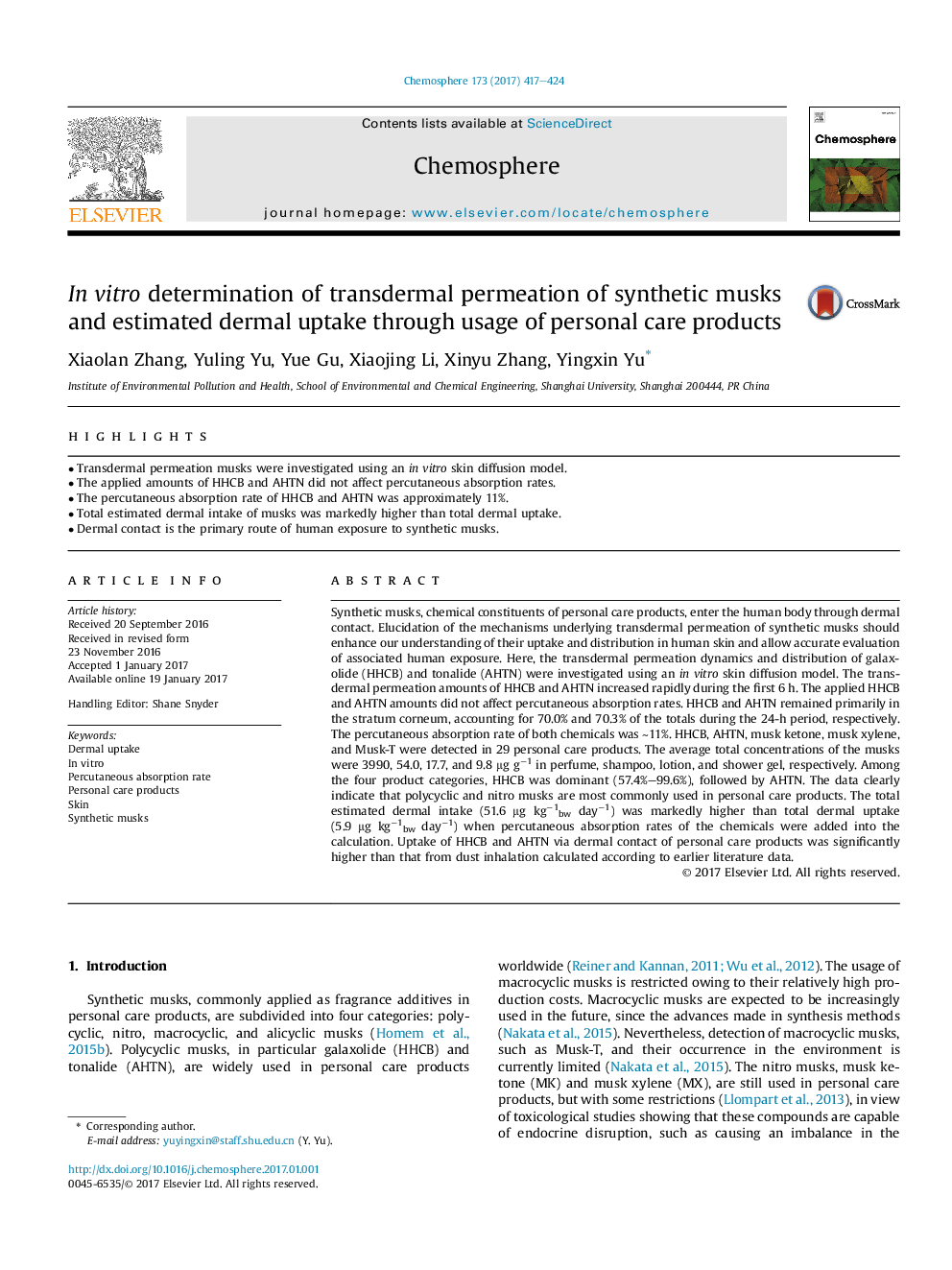| کد مقاله | کد نشریه | سال انتشار | مقاله انگلیسی | نسخه تمام متن |
|---|---|---|---|---|
| 5747407 | 1618798 | 2017 | 8 صفحه PDF | دانلود رایگان |

- Transdermal permeation musks were investigated using an in vitro skin diffusion model.
- The applied amounts of HHCB and AHTN did not affect percutaneous absorption rates.
- The percutaneous absorption rate of HHCB and AHTN was approximately 11%.
- Total estimated dermal intake of musks was markedly higher than total dermal uptake.
- Dermal contact is the primary route of human exposure to synthetic musks.
Synthetic musks, chemical constituents of personal care products, enter the human body through dermal contact. Elucidation of the mechanisms underlying transdermal permeation of synthetic musks should enhance our understanding of their uptake and distribution in human skin and allow accurate evaluation of associated human exposure. Here, the transdermal permeation dynamics and distribution of galaxolide (HHCB) and tonalide (AHTN) were investigated using an in vitro skin diffusion model. The transdermal permeation amounts of HHCB and AHTN increased rapidly during the first 6 h. The applied HHCB and AHTN amounts did not affect percutaneous absorption rates. HHCB and AHTN remained primarily in the stratum corneum, accounting for 70.0% and 70.3% of the totals during the 24-h period, respectively. The percutaneous absorption rate of both chemicals was â¼11%. HHCB, AHTN, musk ketone, musk xylene, and Musk-T were detected in 29 personal care products. The average total concentrations of the musks were 3990, 54.0, 17.7, and 9.8 μg gâ1 in perfume, shampoo, lotion, and shower gel, respectively. Among the four product categories, HHCB was dominant (57.4%-99.6%), followed by AHTN. The data clearly indicate that polycyclic and nitro musks are most commonly used in personal care products. The total estimated dermal intake (51.6 μg kgâ1bw dayâ1) was markedly higher than total dermal uptake (5.9 μg kgâ1bw dayâ1) when percutaneous absorption rates of the chemicals were added into the calculation. Uptake of HHCB and AHTN via dermal contact of personal care products was significantly higher than that from dust inhalation calculated according to earlier literature data.
Journal: Chemosphere - Volume 173, April 2017, Pages 417-424